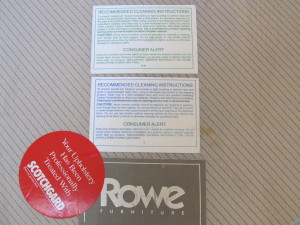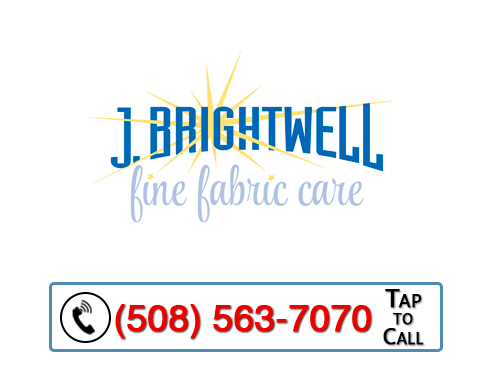 What do those letters on that tag mean?
What do those letters on that tag mean?
If you lift a seat cushion on a sofa or chair, chances are you will see a tag labeled along the lines of “Recommended Cleaning Instructions”. Somewhere on that tag, you should see the letter S, W, or X. Sometimes, you may see more than one of these letters or a combination of two letters. What you are looking at is the code, or codes, for the manufacturer recommended cleaning method.
Here are the meaning of those codes:
W – Indicates the material can be cleaned using a wet cleaning method; hot water extraction and/or shampooing.
S – Dry clean using a solvent based cleaner. Do not use a water based cleaning agent.
W/S – Clean using a wet or dry method depending on the type of soil or stain being cleaned.
X – Vacuum only. Clean by lightly brushing the soiled area followed by vacuuming. Do not use a water or solvent based cleaning agent. To translate what the manufacturer is saying, ‘You bought a piece of furniture that can’t be cleaned. Best of luck!’
Most people would agree that assigning a particular cleaning code for different types of fabric is a good idea. And it is, for the furniture manufacturer. The reality of upholstery cleaning is that the one method that consistently produces good, noticeable results is a water based method. Unfortunately, the cleaning code seen most often is S, indicating dry cleaning. While dry cleaning with a solvent based cleaner is appropriate in some situations with specialty fabrics, in most cases the results are likely to under-whelm you. Even though a dry cleaning method may be recommended, with the proper care, most upholstery can be cleaned using a water based cleaning method.
Although cleaning codes should never be ignored, the real key to cleaning upholstery is identifying whether the fabric being cleaned is made with a natural fiber, a synthetic fiber, or a blend and then choosing the correct cleaning agent. Correctly identifying the type of fibers used in constructing the upholstery is equally important if applying fabric protector after cleaning.
For a number of reasons, cleaning upholstery presents more challenges than cleaning carpet. However, a professional cleaner that has invested the time and resources to learn how to correctly evaluate the fabric being cleaned and then choosing the appropriate cleaning agent has a very good chance of producing results that are more than satisfactory.


